Located in a privileged enclave (the confluence of 4 rivers: the Ter, Onyar, Galligants and Güell), since its creation in the Iberian period, Girona has had an exciting history: a city of the Roman Empire, conquered by the Muslims, liberated by the local people, and handed over to Charlemagne, besieged by the French in the war of independence...
With such an interesting historical background, it is very difficult to choose the most beautiful places. However, we will try:
Cathedral of Sant Mary of Girona
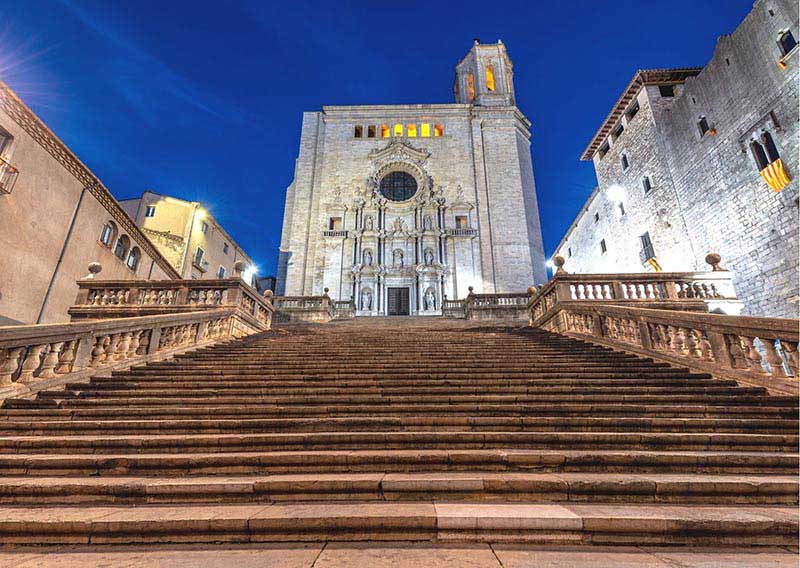
We start with one of the main claims, the iconic image of the city. Dedicated to Saint Mary, Girona Cathedral is one of the great symbols of the city. Located in the area "Força Vella", the powerful fortress that the Romans built in the 1st century BC and that can still be seen in some sections of the wall. The cathedral is the result of different styles and periods: Romanesque, Gothic and Baroque.
One of its main features is that it has the widest Gothic nave in the world, with 22,98 meters. Attached to the church we find the treasure of the Cathedral, where two pieces of great value stand out: the Tapestry of Creation and the Beatus of Girona.
Next to the cathedral of Girona, there is also the old episcopal palace, currently home to the Girona art museum, with the third largest collection of Romanesque and Gothic art in Catalonia.
Sant Fèlix Basilica
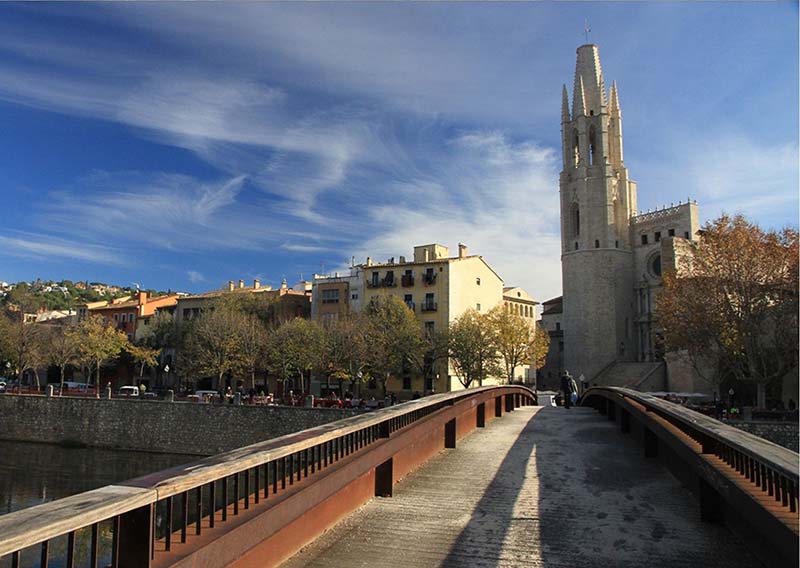
The basilica of “Sant Fèlix” or “Sant Feliu” was the main temple until the construction of the Cathedral. Built on top of the hill, where most of the Roman city extended, it is located very close to the Cathedral (one of the most iconic photo frames of the city is the one with the two temples).
Its construction, in honour of the martyr San Félix, lasted from the 12th to the 17th century. Stands out for the bell tower and the 8 Roman and Paleo-Christian sarcophagi that were collected on the same site. The Gothic tomb of Sant Narcís, patron saint of Girona, also rests in this basilica.
Cul de la Lleona
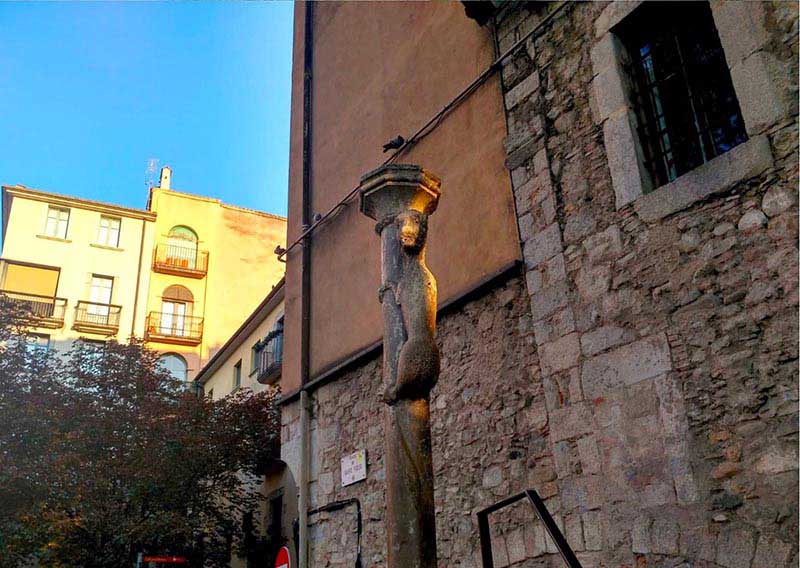
Font: Visita Costa Brava
If you are visiting Girona and want to come back, legend says that you should kiss the lioness's bottom of the monument located in front of Sant Fèlix. The tradition, according to popular culture, is due to the fact that previously, in that place, there was the "Hostal de la Lleona" whose claim was a lioness climbing a column. Since it was not very high, passers-by could easily touch its bottom until it became a tradition for strangers to touch its bottom so that it would never leave the city. This was leading to the traditional kiss. So, if you come to visit Girona, start preparing your lipstick, you will surely want to come back.

Convent of Sant Domènec
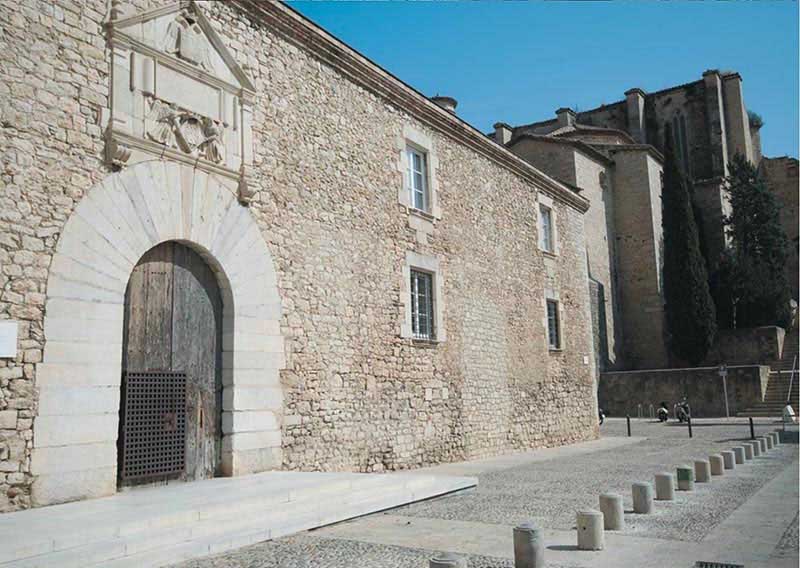
Font: Catalunya.com
Founded in 1253 by Bishop Berenguer de Castellbisbal, the convent of Sant Domènec, is made up of two cloisters, the convent and the church, in Gothic style. What was initially a convent, became a Civil Guard barracks after the exclusion in 1822. Currently, since the early 2000s, it has housed the Faculty of Letters of the University of Girona.
Strolling through its cloisters, having a coffee on the terrace, or seeing the Narcís Comadira mural that presides over the entrance, Sant Domènec is worth the visit.
Onyar River’s houses

Also called the hanging houses, they are the ones that overlook the river in the section of the Rambla and Argenteria. These are rebuildings of the old constructions on the medieval wall of the city. One of the most outstanding houses is Casa Masó, birthplace of the Catalan architect Rafael Masó, which he rehabilitated in 1910.
Casa Masó, a symbol of Newcentism in Girona, preserves the furniture and decoration of the period. It is currently owned by the Girona City Council and is the only Onyar house open to the public.
Jewish quarter
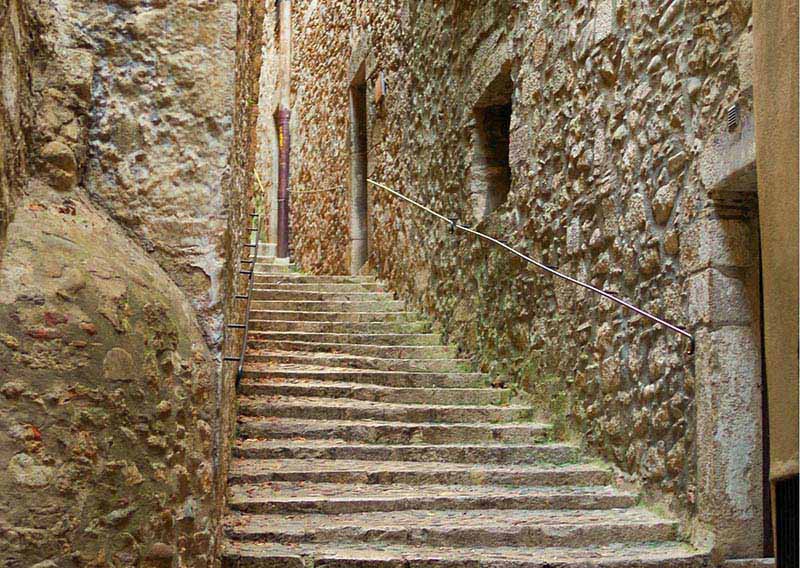
One of the most hidden and beautiful spaces in the city. When you enter the labyrinth of alleys and patios you transport to medieval times, when the Jewish community had a very important weight in Girona.
Excellently well preserved, the Jewish quarter began in the 12th century, on Carrer de la Força. Until the 1492 edict, which forced the Jews to convert to Christianity or be expelled from the city, the Jewish community of Girona was very extensive and with such illustrious figures as the doctor, philosopher, and exegete Mosse ben Nahman, better known as Bonastruç de Porta.

Sant Daniel Valley
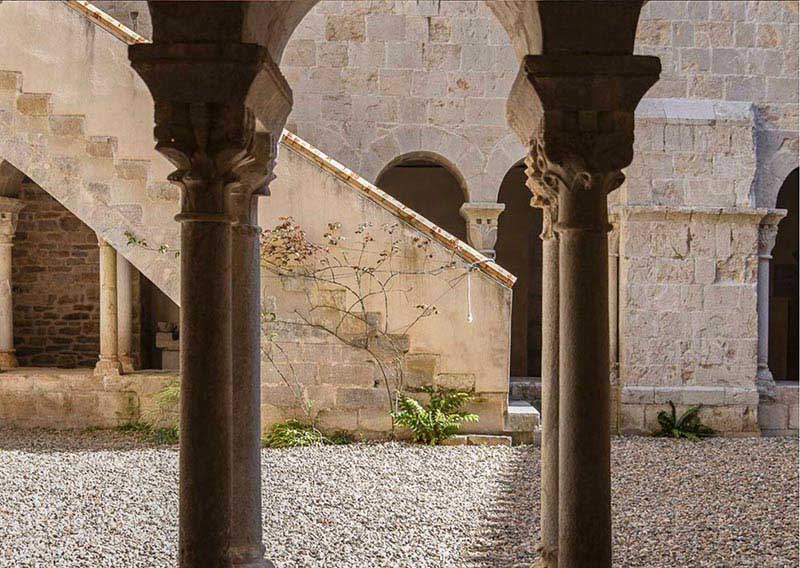
Font: Gencat.cat
Located at the North end of the city, it is one of the greenest areas of Girona, a place where the locals go for a walk, to have picnics, etc. The valley, sculpted by the river Galligants, is full of little mineralized water sources: the Pericot, Fita, Bisbe and Ferro (spicy water gushes from this last source).
In the valley you will find Monastery of Sant Daniel, where a community of Benedictine monks still lives today, being one of the few that have persisted since medieval times. The church, which houses the tomb of San Daniel (14th century), is a beautiful example of Romanesque construction with Gothic additions.
For lovers of walking and hiking, from the valley you can reach the castle of Sant Miquel or the Sanctuary of Nostra Senyora dels Àngels. The views are worth the effort from both sites.
Rambla de la Llibertat
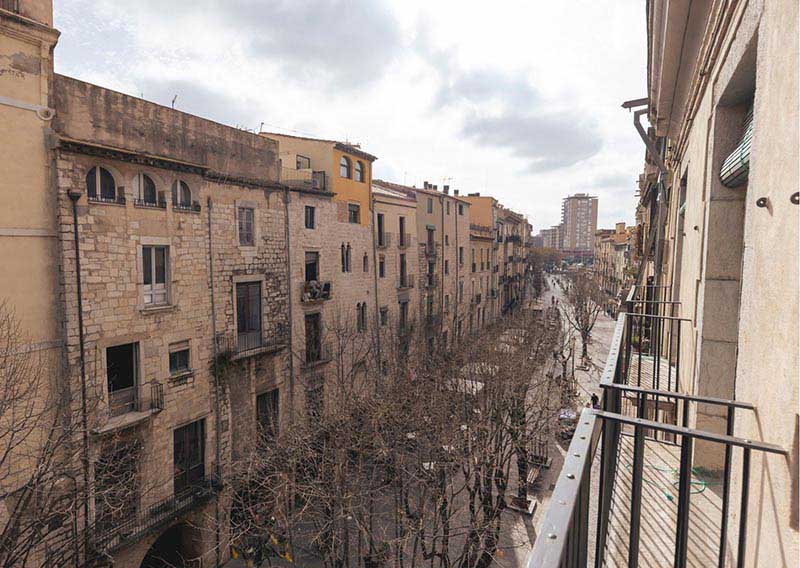
Popularly called La Rambla, it is one of the most emblematic places of the city. Full of shops and bars with terraces, it is the nerve center of the city and a place to promenade for both tourists and locals.
Urbanized in the 13th century to celebrate the market, it owes its name to the tree planted in 1869 during the democratic administration. Originally it was formed by a wide and long square that went from Carrer de l’Argenteria to Carrer d’Abeuradors. Currently the boulevard begins near the Pont de Pedra and runs parallel to the Onyar River till the entrance of the Old Quarter.
These are just some of the most special spots in Girona. However, there are many more places to visit. Follow our social networks and you will be able to discover all the corners of the city and its surroundings. And if you want to visit it first-hand, click on the link and enjoy the best apartments in the city.
